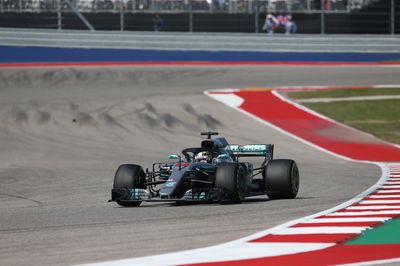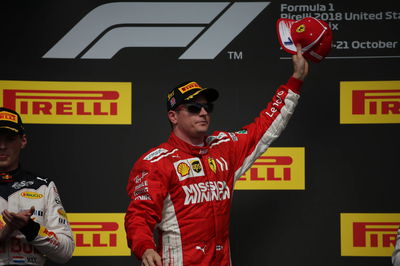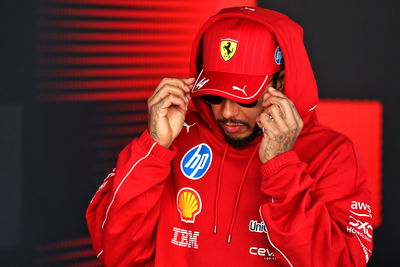Mercedes committed Hamilton to two-stop in US GP
Mercedes always planned to bring Lewis Hamilton in for a second pit stop during Sunday’s United States Grand Prix after pitting him under the Virtual Safety Car early in the race, only to be caught out by the tyre blistering experienced on the Soft compound.
After losing the lead at the start to Kimi Raikkonen, Hamilton tried to get the jump on his Ferrari rival by pitting on Lap 11 under the Virtual Safety Car, allowing him to lose less time to the rest of the field than if he pitted under usual speeds.

Mercedes always planned to bring Lewis Hamilton in for a second pit stop during Sunday’s United States Grand Prix after pitting him under the Virtual Safety Car early in the race, only to be caught out by the tyre blistering experienced on the Soft compound.
After losing the lead at the start to Kimi Raikkonen, Hamilton tried to get the jump on his Ferrari rival by pitting on Lap 11 under the Virtual Safety Car, allowing him to lose less time to the rest of the field than if he pitted under usual speeds.
Hamilton was able to reel in Raikkonen on fresh tyres but failed to pass the Finn, who put up a stringent defence before making his one and only stop of the race 10 laps later.
Suffering with blistering, Hamilton was forced into a late second stop that saw him emerge in third place on-track. He was unable to pass either race winner Raikkonen or Max Verstappen in P2, meaning he could not clinch his fifth world title in Austin on Sunday.
Speaking after the race, Mercedes team boss Toto Wolff explained the decision to move Hamilton onto a two-stop strategy, and confirmed that it never planned to keep the Briton out to the end of the race as he struggled on his Soft tyres.
“I think the moment we committed to a two-stop, we were running second on the road and thought that by moving to a two-stop at that stage, we would only lose a position to Valtteri [Bottas], catch up Kimi and then effectively be on the same one more stop to do but on a better tyre,” Wolff explained.
“We knew that Valtteri was going to help Lewis a little, and then Lewis was going to catch up on Kimi with a much quicker tyre. The thing was that we committed to a two-stop at that stage, also because our car wasn’t great and the tyres were degrading, so it all went against us.”
Hamilton saw his advantage over Raikkonen fall from from 17 seconds to less than nine in the space of seven laps, with Wolff saying the team hoped to extend the stint to give him fresher tyres for the closing stages.
“The thinking was that if we were to bite the bullet a little bit more, we would have a larger tyre differential at the end,” Wolff said.
“But then we started to drop massive pace and probably we were a lap or two late in pitting Lewis because the tyres dropped off in the mid-38s, low-39s to 41s."
Asked if there was any hint of the tyre blistering in practice, Wolff said: “No it was unexpected.
:We knew that this could be a problem but we were going strong in the first stint actually on the Supersoft behind Kimi, it was good. Then putting the Softs on at that time, it was still under control, and Lewis started to push and the tyres started to blister.
“This is the moment we realised things were going against us.”











